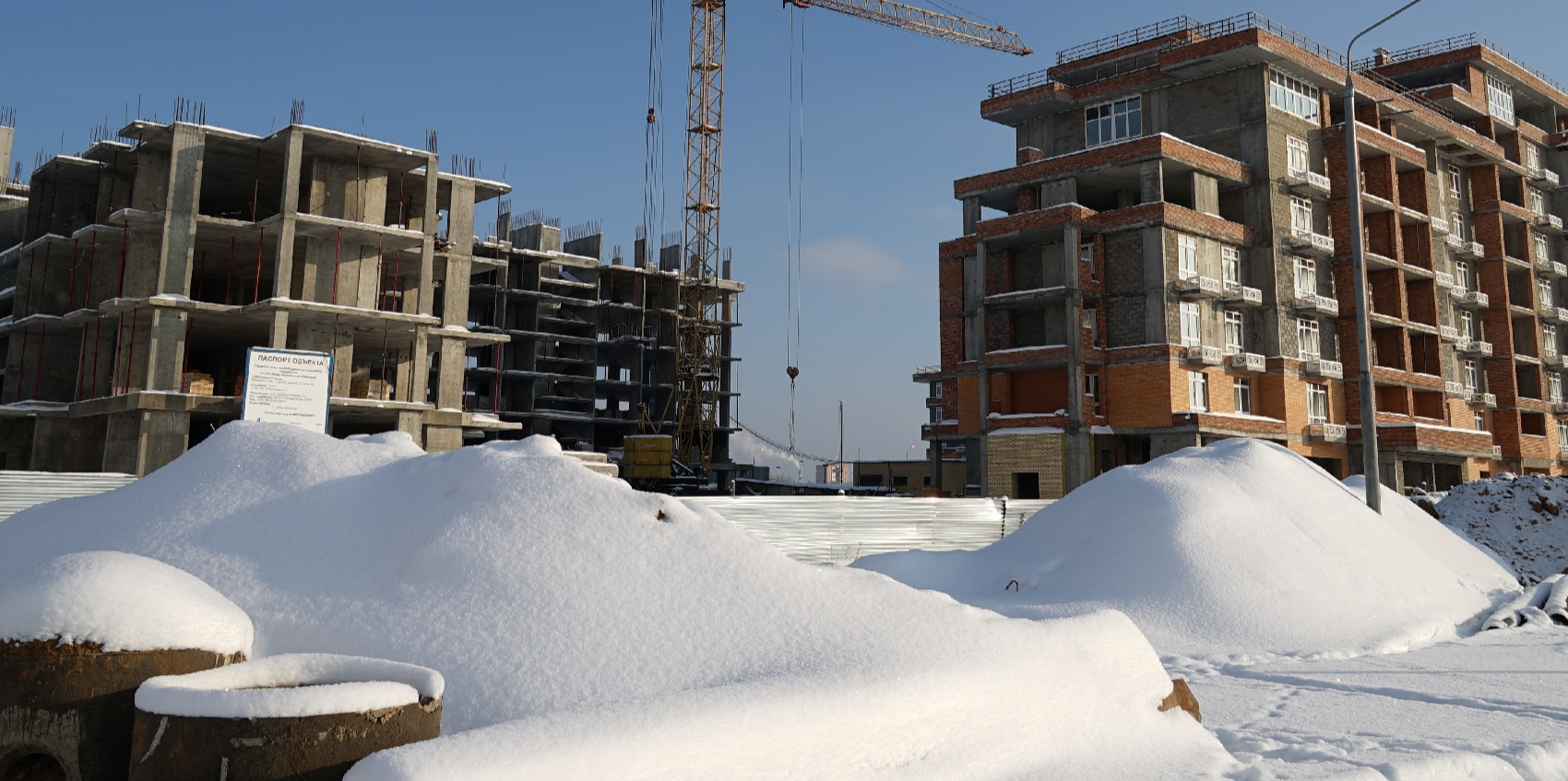The 4 Worst Sources of Moisture Intrusion in Winter

Moisture intrusion is a year-round issue. And, for those who need to ask: “What is moisture intrusion?” a simple moisture intrusion definition is that it is the presence of unsafe amounts of moisture in a structure that could cause accidents, damage to building materials, or the growth of mold.
In the winter, water damage restoration specialists are often kept busy with calls from customers who have experienced sudden flooding of their homes or businesses. While surprising to these customers, the fact that winter weather can bring moisture intrusion is well known to restoration experts.
To ensure that restoration projects are fully completed and that no further flooding will occur, it is vital to track down the moisture intrusion source. This often involves extensive moisture testing throughout the structure as you narrow down the source of moisture. However, you can simplify your moisture intrusion inspection somewhat by first investigating the most likely sources of moisture intrusion in winter.
What are the worst sources of moisture intrusion during the winter season? How can you perform a moisture intrusion inspection quickly and efficiently? And, what can you do to prevent further intrusion of moisture?
Here are a few of the worst sources of moisture intrusion in winter:
Moisture Intrusion Source #1: Burst Pipes
One of the most common sources of moisture intrusion in the winter is a burst water pipe. When water freezes, it expands. With nowhere else to go, the ice in a water pipe fills the pipe completely—becoming a blockage that prevents water flow. This creates excessive pressure in the pipe with no outlet until the pipe itself fails.
Burst pipes are often easy to find with a little effort. The pipes most likely to burst are those that are exposed to the open air without any insulation, making them easy to see unaided. Burst pipes hidden beneath floors or in the walls may be harder to find. The common outward signs of these include discolored flooring/walls, standing water puddles, and musty odors (indicating mold growth).
Inspecting the building’s blueprints for pipe locations and using moisture meters along walls and floors where pipes run can be a good starting point in your moisture intrusion testing.
Remediating Burst Pipes
The simplest way to remediate a burst pipe is to replace it with a new one. However, replacement alone won’t prevent a repeat of the events leading up to the burst. To prevent future pipe bursts, it’s important to insulate the pipes to keep the water in them from freezing again.
When insulating pipes, be sure to check the surrounding pipes for signs of corrosion or leakage—it won’t do any good to insulate the pipes if water from them will soak the insulation through. If other pipes are leaking or corroded, it may be necessary to replace them as well.
Moisture Intrusion Source #2: Attic/Roof Spaces
Another leading source of moisture intrusion in the winter is the attic or roof of a structure. In winter, snow tends to accumulate on the roof of the structure. From there, there are several ways that this could lead to water flooding the structure:
- The weight of the snow could cause part of the roof to collapse or weaken, allowing moisture in.
- Heat from a poorly-insulated attic could cause the snow to melt. The melted snow can then re-freeze into ice after soaking into roof materials—expanding and creating gaps that moisture can enter.
- Existing gaps in the roof, which normally go unnoticed, may have sufficient amounts of snow surrounding them to funnel further moisture into the hole.
The first two cases are especially problematic since they may lead to continuous moisture intrusion even after the snow itself is gone.
One easy to spot an outward sign of moisture intrusion from the attic or roof would be discoloration of the ceiling or high up the walls on the top floor of the structure. Testing insulation in the attic space can also help to reveal whether the moisture intrusion source is near that area of the structure.
Remediating Attic/Roof Leaks
Remediating an attic or roof leak can be a time- and resource-intensive process. If the roof itself is damaged, the compromised material will need to be removed and replaced—patches may not be reliable enough in winter when water may get into or under the seal and freeze.
Additionally, any insulation between the roof and the building may need to be removed and replaced as well. If water is trapped in the insulation, it could lead to mold or bacterial growth that threatens the building’s structural integrity and/or creates respiratory hazards for its occupants.
This will require thorough moisture testing of the insulation in the attic with a moisture meter and extra-long probe. The probe is necessary to get deep into the insulation to find hidden moisture pockets.
It can also help to upgrade the attic’s insulation to prevent heat from the building from leaking through the roof—this will help to prevent the snow from melting and refreezing into ice during the winter.
Moisture Intrusion Source #3: Window and Door Frames
Roofs aren’t the only area where snow can pile up in the winter. Another common source of moisture intrusion in winter is along window and door frames. Snow can pile on the windowsill throughout winter and, when that snow melts, leak into the building through gaps in the frame. Snow piled near doorways leading inside can also cause minor flooding.
Usually, these moisture intrusion sources are very minor and could easily be cleaned up by the building’s occupants before they become a major issue. However, if left unchecked, they could cause significant damage that leads to further moisture intrusion.
For example, if water flows partway into a gap in the window frame and then freezes, the resulting expansion could crack the frame and allow more moisture into the structure. Large amounts of snow sitting too close to a ground-level entryway could create temporary flooding when it melts.
Remediating Window Frame and Doorway Moisture Intrusion
In the case of window moisture intrusion, the required fix depends on the state of the window frame at the time of remediation. If the moisture intrusion is minor and the frame is undamaged, simply sealing existing gaps with caulk may be enough to prevent further problems. If the frame itself is damaged, however, it may need to be replaced.
With flooding from snow piled near doorways, standard water damage remediation practices should be applied—the affected building materials and furniture should be removed, a water removal system used to eliminate standing water puddles, and an air circulation system set up to funnel the moist air outside.
To prevent further moisture intrusion, seals in the doorframe should be checked and upgraded as necessary. The building’s owner should also be advised to keep any large piles of snow well clear of the structure whenever possible.
Moisture Intrusion Source #4: Cracks in the Foundation and Walls
Cracks in the foundation and exterior walls of a structure are another major source of moisture intrusion throughout the year—and especially toward the end of the winter season. As winter drags on, snow can pile against the sides of the building. When the winter season finally ends, the melting snow can cause some flooding of the structure by leaking through cracks in the foundation or the exterior walls.
Here, the signs of moisture intrusion may not appear for days or weeks after the flooding. Why? Because, the moisture intrusion source is often under the flooring and hidden from the naked eye. It may take time for the excess moisture to evaporate from the foundation and cause enough damage to the flooring systems above it to be noticeable.
The signs of this type of winter moisture intrusion may vary depending on the type of flooring system in the structure. For example, wood flooring systems may warp or cup as floorboards expand and press against one another. Tile flooring may become loose as the adhesive fails. Or, occupants may notice musty odors coming from the floor as the combination of moisture and darkness encourage mold growth.
Remediating Cracks in the Wall and Foundation
When working to repair damage from this source of moisture intrusion, it may be necessary to tear out significant portions of the floor and inspect the foundation of the structure to make sure it is properly sealed against moisture intrusion. Finding cracks between the exterior wall and the foundation and sealing them with caulk or other sealants can help minimize the risk of future moisture intrusion.
However, exposing the foundation itself and checking whether it is properly sealed may be a major project that requires heavy earthmoving equipment. So, sealing the foundation is usually a task for specialists.
Performing Moisture Testing with Moisture Meters and Thermo-Hygrometers
Sometimes, knowing what the source of the moisture intrusion isn’t enough. It’s important to test various materials in the structure to determine if they’re moisture-compromised for dry out/tear out operations as well. Also, it may be difficult to pinpoint the exact location of a leak in a structure in the first place—even when it is one of the common intrusion sources listed above.
So, here’s a simple guide to using moisture meters and thermo-hygrometers to track down moisture pockets and intrusion sources in a structure:
- Use Thermo-Hygrometers to Narrow Your Search. When beginning moisture testing in a structure, thermo-hygrometers can be an invaluable tool for narrowing down the search area to a few specific rooms. These devices test the relative humidity (RH) in a given area. By testing RH throughout the structure, you can identify rooms that have an abnormally high RH value compared to others. These rooms are more likely to contain or be near the source of the moisture than rooms with lower relative humidity.
- Use Pinless Moisture Meters to Check Large Areas Quickly. When checking for moisture in flat surfaces, pinless moisture meters are arguably the fastest and easiest way to find moisture pockets quickly. Pinless meters cover several inches of space with each check and, when done, you can simply lift the meter, place it against another spot, and take another moisture measurement right away. Spaces that would take all day to check with a pin moisture meter can often be thoroughly tested in an hour or less with a pinless meter.
- Use Pin Moisture Meters to Pinpoint Moisture Intrusion Sources. As useful as pinless meters are for quickly identifying if building materials are moisture-compromised, pin meters are better for determining how deep a moisture pocket is and identifying the precise boundaries of the moisture-compromised zone. There’s a trick with pin moisture meters where you can drive a nail into the wet part of the wall, tie an insulated wire to it and the tip of one moisture meter pin, then drive the other pin into different parts of the wall to quickly identify the extent of the wet area.
Need help finding the right moisture meters to use for wintertime moisture intrusion testing? Talk to the experts at Delmhorst to discuss your needs.
Subscribe to Our Blog
Post Related

Is Your Moisture Meter Not Working? Here’s Why!
.jpg?width=900&name=iStock-1337550282%20(1).jpg)

